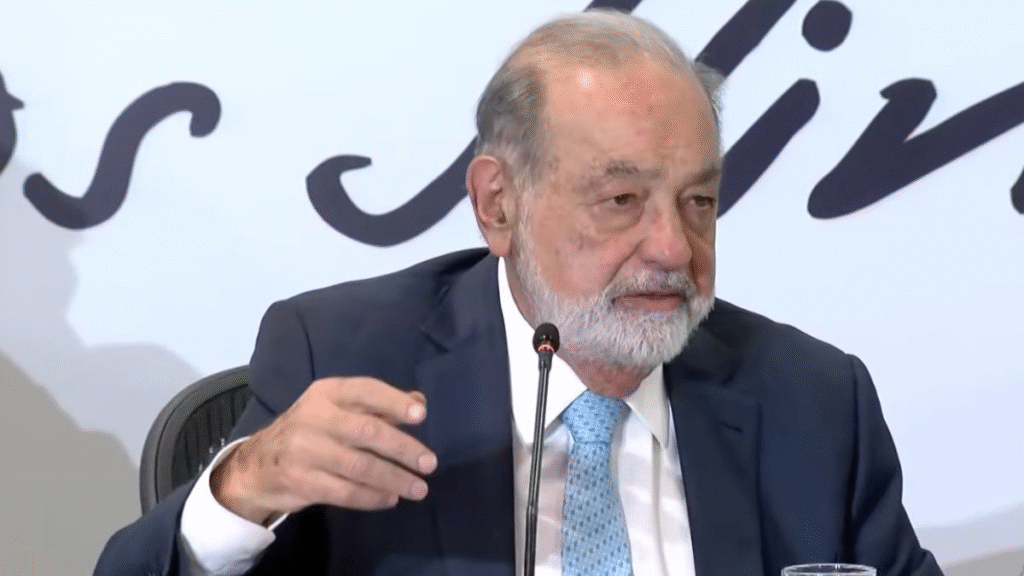In the world of billionaires, names like Elon Musk, Jeff Bezos, and Warren Buffett often dominate headlines. Yet one figure who has consistently ranked among the wealthiest individuals in the world is **Carlos Slim Helu**, the Mexican business magnate often described as the “Warren Buffett of Latin America.” With a staggering **net worth of \$101 billion**, Slim has built an empire that stretches across industries as diverse as telecommunications, retail, finance, construction, and mining. His story is one of sharp investment acumen, disciplined business philosophy, and an extraordinary ability to spot opportunities even in economic downturns.
Unlike many billionaires whose fortunes stem from one breakthrough company or invention, Slim’s wealth is spread across a sprawling portfolio of businesses. His immense fortune is not only a testament to his personal business genius but also a reflection of how deeply his companies are integrated into the fabric of the Mexican and Latin American economy.
Early Foundations of Wealth
Carlos Slim Helu was born on January 28, 1940, in Mexico City, into a Lebanese immigrant family. His father, Julián Slim Haddad, was a successful businessman who instilled in young Carlos the values of financial discipline and entrepreneurship. From an early age, Slim learned the importance of savings, investments, and reinvestments—a philosophy that would become the cornerstone of his empire.

By the time he was 12 years old, Slim had already bought his first stock in a Mexican bank. At 15, he had begun keeping financial records of his small investments, foreshadowing the meticulous control he would later exert over his vast companies. Unlike many who inherit fortunes and squander them, Slim used his family background as a launching pad to create something much larger.
The Path to Billionaire State
Slim’s wealth began to snowball in the 1980s during a period of economic crisis in Mexico. While many companies were collapsing under pressure, Slim used the downturn as an opportunity to acquire undervalued businesses. His investment strategy was simple but highly effective: purchase struggling companies at a discount, restructure them, and turn them profitable.
One of the pivotal moments in his journey came in the 1990s when the Mexican government privatized Telmex, the national telephone company. Slim’s conglomerate, **Grupo Carso**, acquired a controlling stake in Telmex. This move gave him dominance over Mexico’s telecommunications sector, which later became the foundation of his wealth.
Carlos Slim Helu’s Net Worth Today: \$101 Billion
As of the most recent estimates, Carlos Slim Helu’s net worth is valued at **\$101 billion**. This extraordinary fortune places him among the richest men in the world. What makes Slim’s wealth especially noteworthy is its breadth—his investments cover virtually every corner of the Mexican economy, making him an indispensable figure in the country’s business landscape.
His wealth is not concentrated in one company but is spread across multiple sectors. At one point, Slim’s companies accounted for as much as **40% of the listings on the Mexican Stock Exchange**, a staggering indicator of his influence. Even today, his empire reaches into telecommunications, finance, real estate, retail, construction, and industrial ventures.
Sources of His Fortune
Telecommunications – The Core of Slim’s Wealth
Slim’s largest source of wealth comes from telecommunications. **América Móvil**, the multinational telecommunications giant he controls, is the crown jewel of his empire. América Móvil is the largest telecom company in Latin America and operates in more than a dozen countries, serving hundreds of millions of subscribers.
The acquisition of Telmex in the early 1990s eventually evolved into América Móvil, which today accounts for a significant portion of Slim’s net worth. Even in an age dominated by internet-based communication, América Móvil continues to generate enormous revenues.

2. Grupo Carso
Slim’s conglomerate, **Grupo Carso**, is another key pillar of his wealth. Through this holding company, Slim controls interests in retail, industrial manufacturing, construction, and infrastructure. Grupo Carso is one of the largest conglomerates in Latin America and provides Slim with a diversified income stream that cushions his wealth against fluctuations in any single industry.
3. Financial Sector
Slim has a significant presence in banking and financial services. He owns stakes in several banks, insurance companies, and financial institutions across Mexico and Latin America. His involvement in finance ensures a steady flow of capital and investment opportunities.
4. Real Estate and Infrastructure
Slim is also heavily invested in real estate, owning prime properties in Mexico and abroad. His holdings include shopping malls, office buildings, and hotels. Moreover, his construction and infrastructure companies handle large-scale projects that are crucial to Mexico’s economic development.
5. Retail Holdings
Through Grupo Carso, Slim owns stakes in retail chains such as Sears Mexico and Sanborns, making him a major player in the Mexican consumer sector. These businesses contribute to both his wealth and his influence over consumer markets.
Wealth Growth Over Time
Slim’s net worth has experienced fluctuations, largely tied to the performance of the Mexican economy and the global telecommunications sector.
In 2010, 2011, and 2012, Carlos Slim was ranked the **richest person in the world**, surpassing even Bill Gates at the time. His fortune peaked at over \$75 billion during those years.
Although other billionaires like Jeff Bezos and Elon Musk later took the top spots due to the explosive growth of technology companies, Slim has remained consistently in the top tier of global wealth rankings.
Today, at $101 billionSlim’s net worth reflects not only his resilience but also the continued dominance of his business empire.
One of the most impressive aspects of Slim’s fortune is not just how he made it but how he preserves it. His strategy revolves around a few core principles
]

